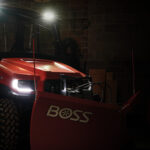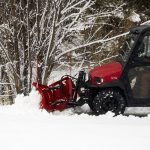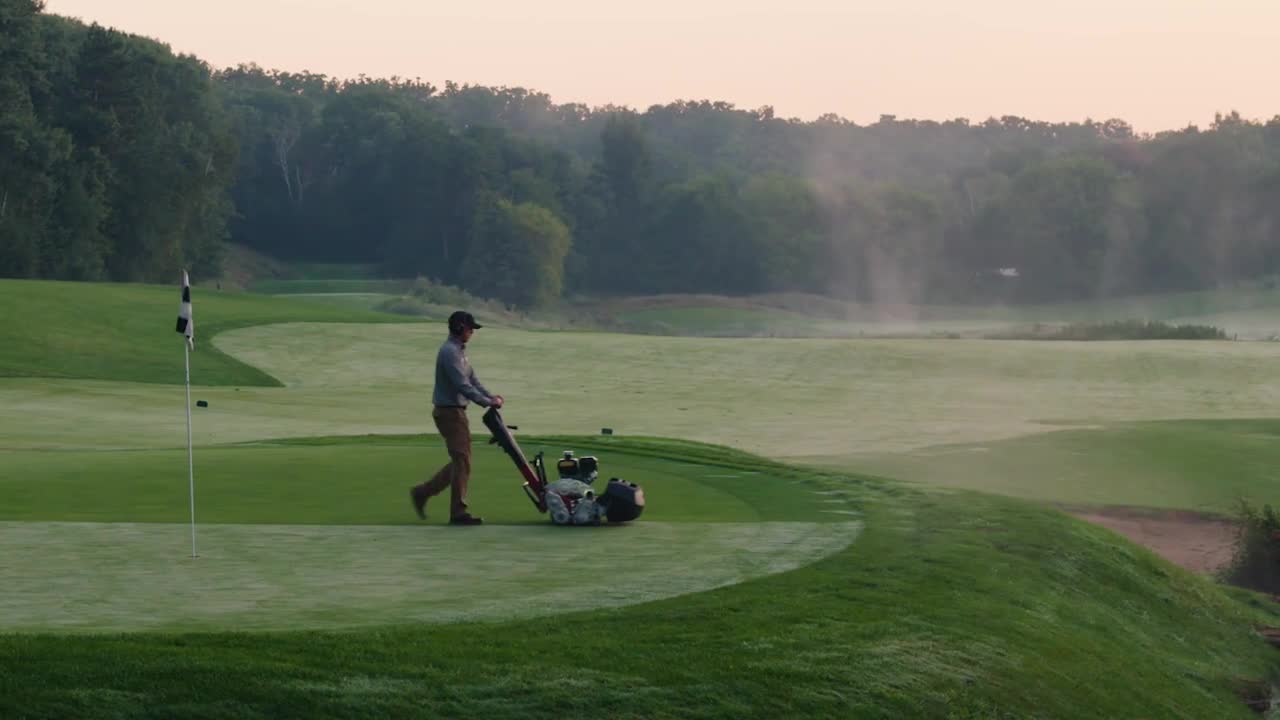This series of articles will attempt to capture just a few innovations, old and new, that Toro has developed over the past 100 years to help our customers meet the ongoing challenges of maintaining their golf courses. In each article, our intent is to quietly honor the customers, channel partners and Toro employees that have all contributed to our longevity and success.
When you think of Toro utility vehicles, the Workman® is probably first to come to mind. However, the reality is that Toro started making utility vehicles decades before the first Workman was launched. Read on for a quick look at how Toro utility vehicles have evolved, and how we’re still bringing new ideas to life that are changing the market today.
1931: The Industry’s First Golf Utility Vehicle
In 1931, Toro introduced the Toro Knockabout, a golf industry first that was designed by company president, J.S. Clapper. The lightweight Knockabout was intended as a means for superintendents and their staff to quickly travel across golf courses with tools, greens mowers, fertilizer and other materials — all carried in the compartment on the back of the machine.

The three-wheeled Knockabout boasted a speed of more than 32 km/h and averaged nearly 32 kilometers per liter of gasoline. It was also powered by an air-cooled, four-cycle motor, and had rubber tires to minimize damage to the turf. According to a 1930 letter to distributors, “Progressive chairmen and superintendents everywhere will recognize the value of this new transportation unit for handling all types of light routine work, such as changing hole cups, tee towels, refilling ball washers, hauling mowers, changing sprinklers, and other jobs requiring quick transportation.”
1961: The Toro Workmaster “Turf Utility Car”
Taking the utility vehicle concept to the next level, Toro introduced the 1961 Toro Workmaster turf utility car for use at golf courses, sports fields, parks and other venues. Although it still featured three wheels and a rear cargo area, the Workmaster was a significant upgrade to the Knockabout, with larger, more comfortable seats and a durable, enclosed body.

The original product was outsourced from the Gross-Given Company of Minneapolis, but Toro launched a new version of its own design in 1974. It was promoted as “the simple, rugged utility vehicle you need for hauling people and equipment … because it’s a professional from the professionals in turf care products.”
Toro’s 1974 Workmaster included a heavy-duty, industrial-quality hydrostatic drive for infinite speed control, instant forward/reverse, and high torque to the rear wheels for “drawbar pull that surpasses the competition.” It also had up-front seating for two, automotive-style controls, a lower center of gravity and spring suspension with shock absorbers on all the wheels for a comfortable ride.
1990: The Toro Workman Is Born
In 1990, Toro introduced its next-generation utility vehicle: the Toro Workman. The new Workman 3200-D could carry nearly 907 kg (2000 lbs) and haul 27 percent more bulk than most standard utility vehicles. It also had front-wheel steering that “deliver[ed] the maneuverability of a three-wheel — allowing for a near-zero radius turn.”
Other features of the 1990 Workman included a low-profile style and an open design with ample legroom to reduce operator fatigue. Oversized rear tires gave the Workman a soft footprint and excellent traction for greater hill climbing ability and sidehill stability. All frequently serviced parts were also easy to access to save maintenance time, and the cargo bed tipped up for easy unloading.

Workman GTX: Built for Today’s Demands
Toro has redefined the utility vehicle category again with today’s Workman GTX Series. Designed to deliver more power, more control and a more comfortable ride, the Workman GTX is the most versatile and practical utility vehicle in its class. In fact, this grounds and turf crossover vehicle offers more than 300 configuration options to enhance productivity — from seating to bed options and a wide range of front and rear attachments.
Key features include an automotive-grade rack-and-pinion steering system that provides more control with less steering effort — as well as exclusive suspension and braking systems. Coil-over shocks on all four wheels result in a smoother ride and less operator fatigue. Plus, hydraulic disk brakes deliver reliable stopping power with less pedal force than mechanical cable brakes.
At 1.2 m (47 inches) wide, the Workman GTX also fits on walking paths and other narrow areas, but don’t be fooled by the compact size. It also has a total vehicle capacity of 544 kg (1,200 lbs) and can tow an additional 680 kg (1,500 lbs). Take the virtual demo to see even more features.

Expanding Possibilities With the Outcross 9060®
The latest Toro innovation in this category is more than a utility vehicle. It’s a multipurpose powerhouse and the only machine of its kind to be purpose-built for the management of fine turf.
The Outcross 9060 combines the capabilities of a tractor and a super-duty utility vehicle in one machine with features that put it in a league of its own. Full-time 4-wheel steering and electronically controlled 4-wheel traction drive make it highly maneuverable and stable. In addition, the balanced design, turf-friendly tires and the fact that it does not require front counter-weights when using a rear attachment make it lighter and significantly more gentle on turf than a traditional tractor.
Another unique feature of the Outcross 9060 is the ability to save settings for up to 16 attachments for easy use and consistent performance every time the attachment is used. It also has seating for two to bring along a second staff member for a job or even a trainer when a new operator is learning to use the machine.
The Outcross 9060 is simple to operate, with intuitive automotive-style controls — no need for an operator to be proficient with the complicated controls and shifting commonly associated with a tractor and attachment. A three-point hitch, drawbar, bed and loader capabilities also allow for all-season productivity. From spreading fertilizer, loading sand, aerating and hauling pallets of sod to removing snow and ice, blowing leaves, towing trailers and much more, the Outcross can be used for all kinds of tasks.





